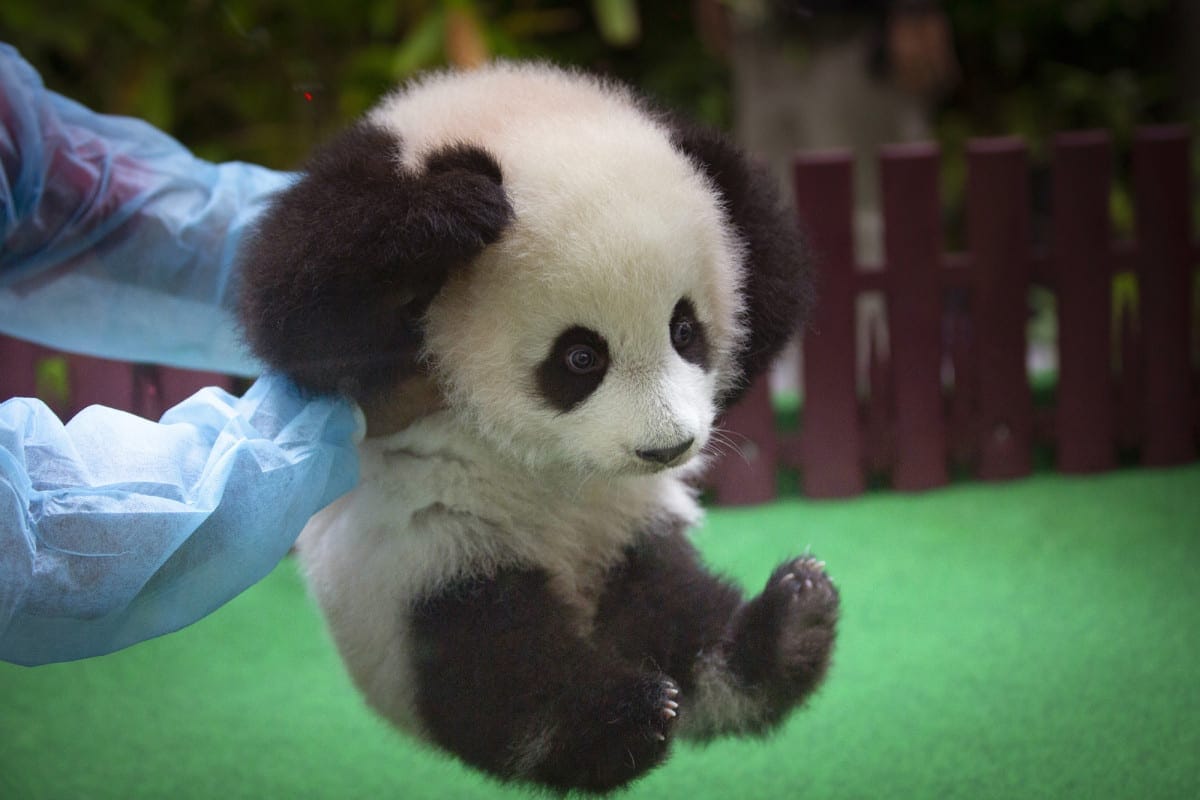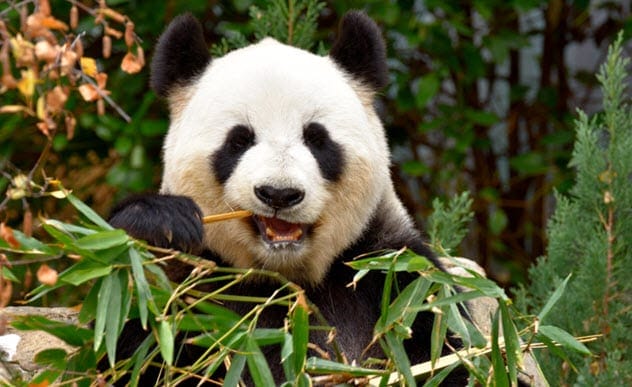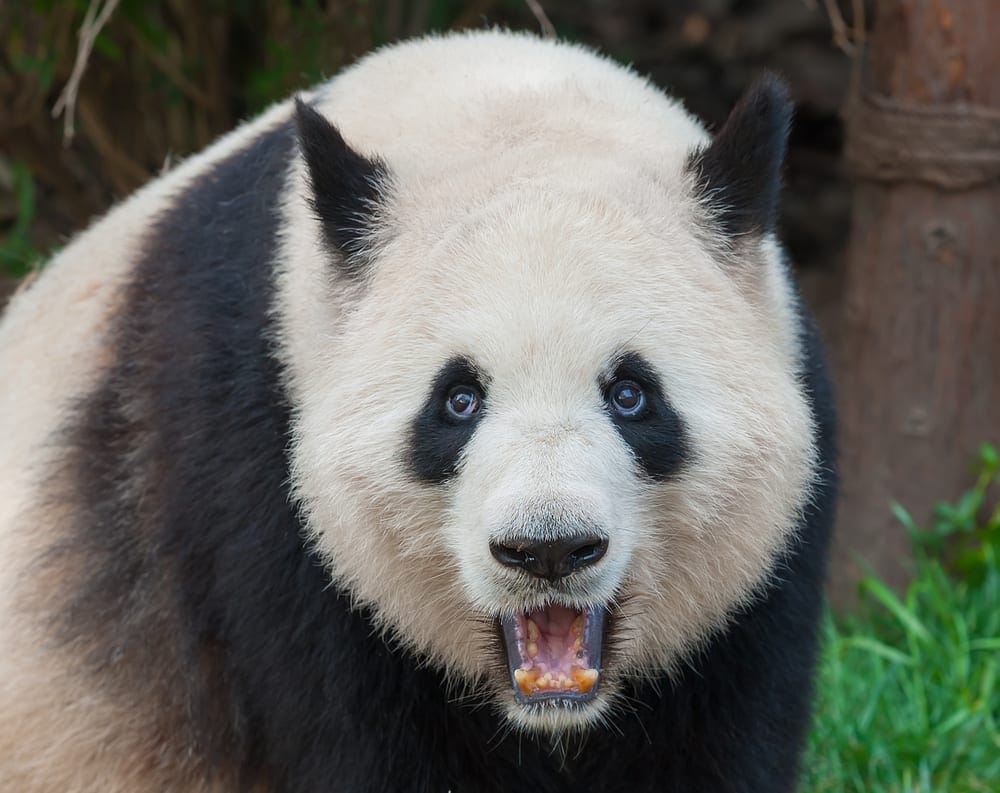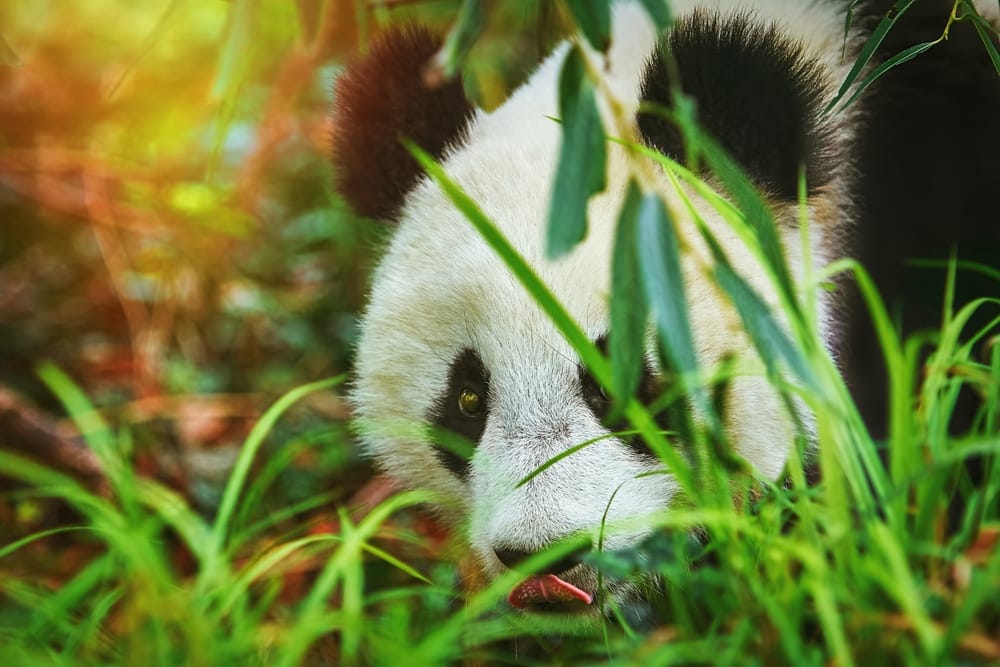Pandas, with their iconic black and white markings, are often seen as symbols of peace and tranquility. But there’s so much more to these creatures than meets the eye. They’ve captured hearts worldwide, and their conservation is a global effort. But how much do you really know about these bamboo-munching bears? Let’s explore some fascinating facts that might just surprise you.
The Panda’s Ancient Ancestry

Did you know that the panda’s family tree stretches back over 11 million years? In 2012, fossil teeth discovered in Spain revealed Agriarctos beatrix, a prehistoric relative of the giant panda. These ancient bears, much smaller than today’s pandas (around 130 pounds), likely climbed trees to evade predators. This discovery challenged the long-held belief that pandas originated in Asia, suggesting a possible European origin. While more evidence is needed, these findings open a new chapter in understanding panda evolution.
From Pink to Panda: The Cub’s Development

Imagine a tiny, pink, and fur-less creature. That’s a newborn panda! These cubs are born blind and completely dependent on their mothers. Around one week, black hair starts to appear, followed by white fur about a month later, gradually giving them their signature look. Though they start walking around three months, they begin eating solid food, like bamboo, around six months, growing rapidly thereafter.
Fun fact: If a panda mother can’t produce enough milk, cubs can be fed dog milk, which is similar in composition. In 2000, a Beijing zoo even found a surrogate dog mom for an abandoned panda cub!
Carnivore’s Gut, Herbivore’s Diet

Here’s a dietary puzzle: pandas primarily eat bamboo, which has very little nutritional value. To meet their energy needs, they consume up to 84 pounds of bamboo daily. Despite being herbivores, pandas possess the digestive system of a carnivore, thanks to their bear family ties. This makes them vulnerable to habitat loss because they depend almost solely on bamboo. While they mainly favor bamboo roots and shoots, they also enjoy about 20 different bamboo species.
Pandas in captivity enjoy a varied diet, including fruit, with apples being a particular favorite, and steamed cornbread.
A Symbol of Peace and Friendship

In China, pandas are more than just animals; they’re revered as symbols of good luck, friendship, and peace. Often compared to the yin and yang, their black and white coloring represents balance and harmony. Historically, panda pelts were prized gifts for emperors, and during the Ming dynasty, they were believed to possess medical powers, capable of warding off tumors and plagues.
Silent Roars: Panda Communication

Unlike their bear relatives, pandas don’t roar. Instead, they bleat, making sounds similar to goats, especially during mating season. They also honk, growl, and bark. Cubs communicate hunger or need for attention through croaking and whining. In total, pandas make about 13 different sounds.
Since pandas can’t use facial expressions or tail wags, they communicate by secreting a sticky substance from their anal glands, leaving scent marks on rocks and trees. These “scent marks” convey a wealth of information, from age and mood to gender and reproductive status.
Black and White Camouflage

The panda’s distinctive black and white markings aren’t just for show. Their white fur helps them blend into snowy habitats, while their black arms and legs provide camouflage in shady spots. Their thick, woolly coat protects them from the cold.
Pandas can grow up to five feet tall and weigh up to 330 pounds. Males are typically larger than females. Their flat molar teeth help crush bamboo, and their enlarged wrist bones function as opposable thumbs, aiding them in holding bamboo shoots.
Also, panda eyes differ from other bears; they have vertical slits for pupils, similar to domestic cats, and the dark patches around their eyes reduce daytime glare.
The Not-So-Docile Side of Pandas

Despite their cuddly appearance, pandas can be irritable and have been known to attack humans. One famous panda, Gu Gu from the Beijing zoo, had multiple biting incidents. In one case, a man who climbed into his enclosure to retrieve a toy was severely bitten on the legs. In another incident, Gu Gu bit a tourist who tried to hug him, who bizarrely bit him back.
The Struggle to Breed

Panda breeding is notoriously difficult due to several factors. Female pandas ovulate only once a year, leaving a tiny 40-hour window for successful insemination. Sometimes, males are clueless about how to mate, leading to missed opportunities. Zookeepers often resort to artificial insemination.
Additionally, it is hard to determine if a female panda is pregnant. They produce “pregnancy hormones” and exhibit nesting behaviors, even when not pregnant, and detecting a fetus via ultrasound is challenging due to their small size. Sometimes, a female’s stool is mistaken for a baby!
A Relatively Recent Discovery

It might surprise you that the Western world only became aware of the giant panda about 150 years ago. Armand David, a French missionary, received a panda skin from a hunter in Sichuan in 1869, marking the first Western encounter. He later saw a live panda but, sadly, it died in transit to Paris.
A zoologist named Alphonse Milne-Edwards examined the specimen and declared the panda a new species, naming it “Ailuropoda melanoleuca,” in 1870.
Hope for the Future

There’s good news for panda lovers! Wild giant panda populations have rebounded, leading to an upgrade from “endangered” to “vulnerable” status after a 17% population increase in the last decade. Organizations like the World Wide Fund (WWF) are working to protect panda habitats from human development. These efforts include preserving panda corridors across China, covering 3.4 million acres.
Working with the Chinese government since 1981, the WWF has implemented measures to prevent panda extinction. Panda reserves safeguard two-thirds of the wild panda population and their bamboo forests, providing shelter for numerous other species as well.










